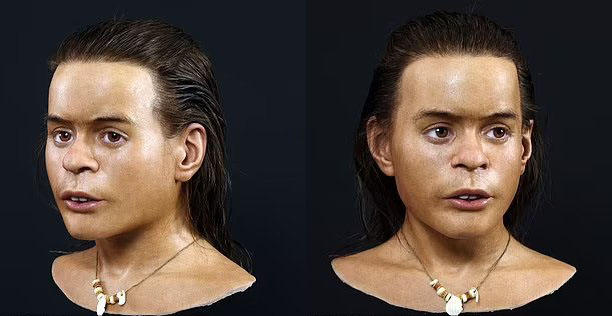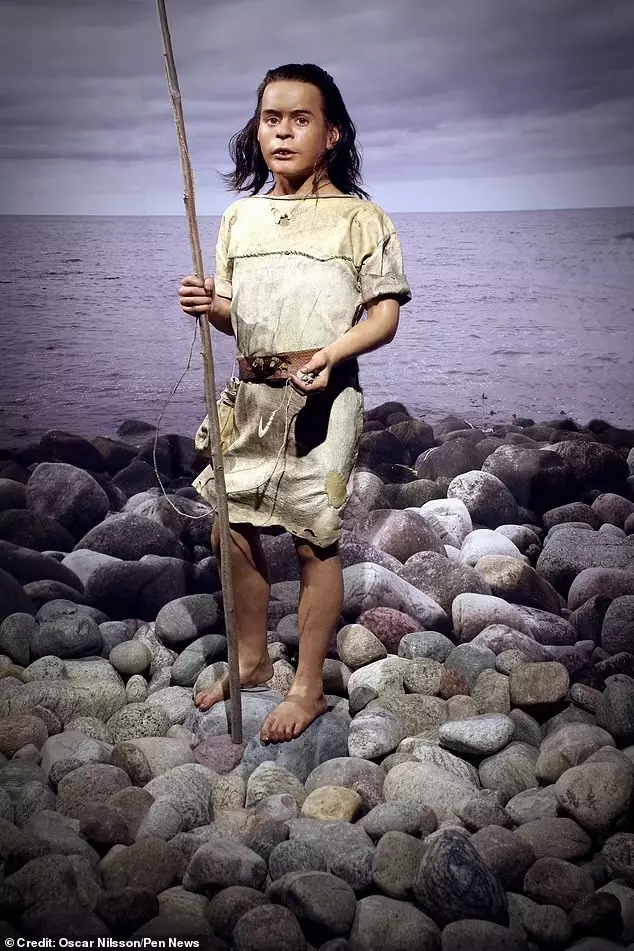Face Of Norwegian Boy Who Lived 8,000 Years Ago Reconstructed
A ‘lonely’ cave boy who died 8,300 years ago in Norway stares at us through the millennia after his features were reconstructed by scientists.
Vistegutten – Norwegian for ‘the boy from Viste’ – was found in 1907, alone in a stone age cave in Randaberg municipality, western Norway.
Now his face can be seen for the first time since the Mesolithic, after a 3D copy of his skull was used to rebuild his features.
Swedish forensic artist, Oscar Nilsson, completed the work by plotting the depth of the boy’s skin at 32 ‘anatomical landmarks’ on the skull.
He said: ‘These 32 measurements are transferred to pegs that I cut to an exact length, and I glue them to the copy of the skull at the specific anatomical points.


‘They reflect the approximate tissue depth, customised to the individual. After this, I start reconstructing the face using a plasticine clay.’
The depth of the flesh depends on the age, gender, ethnicity, and weight of the deceased, which is revealed by an analysis of the skeleton.
In this case, measurements were used from modern 15-year-old boys from northern Europe.
When the remains – the oldest complete skeleton found in Norway – was first unearthed, scientists immediately noticed several anomalies.
Despite his age at the time of his death, the teenager was no taller than 125cm (4ft1).
Another unusual feature was the shape of his head, which was elongated with a protruding, rounded forehead.
This was due to having scaphocephaly – a condition whereby the sutures of a baby’s skull fuse before the brain has finished growing, giving the head a misshapen appearance.
Given the boy’s DNA, Mr Nilsson picked a hair colour, eye colour and skin tone that was typical for his time and place.
‘His remains do not seem to have been buried’, Mr Nilsson said. ‘The skeleton’s position suggests he was sitting down, leaning against the wall inside the cave.
‘Did he fall asleep, before he died? No clues to the cause of his death.
‘His loneliness is just speculation from my side, but he was found as the only skeleton at the site.
‘I can’t help but think of a lonely boy, waiting in vain in the cave for friends and family that never show up.’


In reality, he might have been part of a group of 15-20 hunter-gatherers, moving around according to the season.
The finished model, complete with a period dress and a replica of a fish hook found in his cave, will be displayed at the Hå Gamle Prestegard museum.
Mr Nilssen said: ‘He was found in a cave, and it somehow fulfils our preconceptions of Stone Age savages, but nothing could be more wrong in my opinion.
‘They were gifted, highly competent people: this is something I want the visitors of the museum to realise.’




